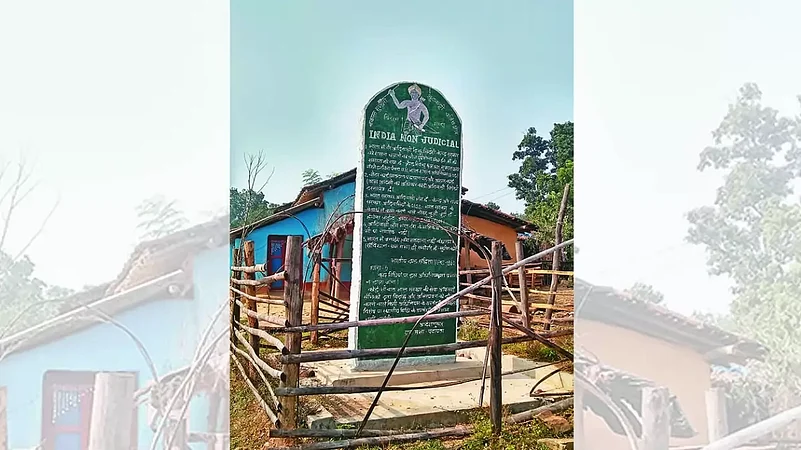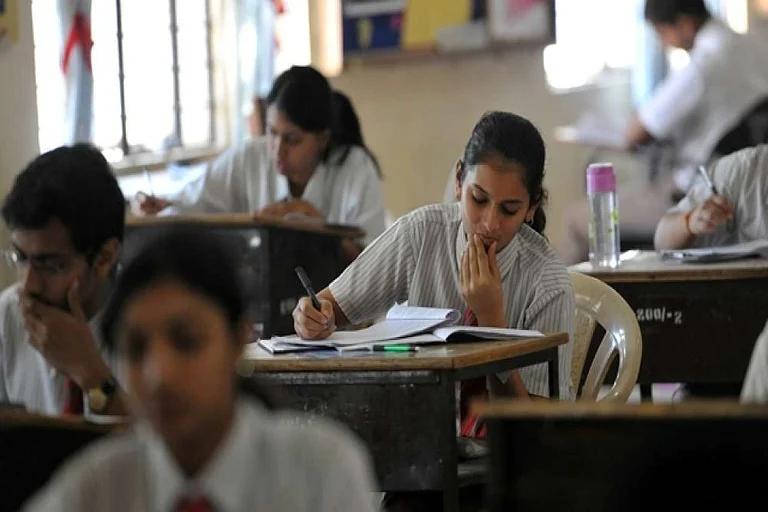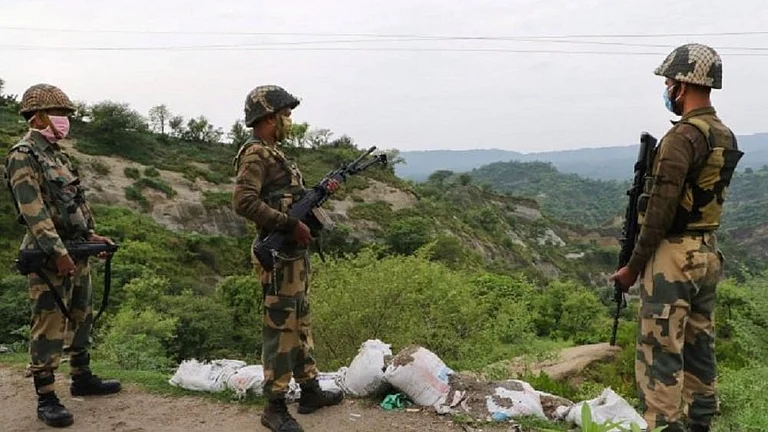One of the important subscripts of the present political juggernaut of the Bhartiya Janata Party (BJP) and the concomitant dominance of political Hinduism has been Sangh Parivar’s increasing reach among Adivasis. The fatal attraction of the BJP among them, whose identity and interests are alien to the conservative Hindu nationalist party, has long been an issue of academic debate. Social science research reveals that the embedding of Hindutva politics among Adivasis in Gujarat, Madhya Pradesh, Chhattisgarh and Odisha has been due to the organisational strength of the Sangh Parivar in these states.
However, this does not wholly explain the growth of saffron politics in Jharkhand. The complex political space of Jharkhand that showcases the plurality of social movements and the enduring history of Adivasi identity assertion provide a much trickier political terrain for the Hindutva brigade to gain support among Adivasis in Jharkhand. The strength of the Church and the continued popularity of regional Jharkhandi parties also pose difficulties to the Sangh Parivar.
Despite the socio-political hurdles for its growth, the BJP has dominated electoral politics in Jharkhand in the last two decades. Also, the unprecedented events of religious tension and violence in Jharkhand coincide with increasing dominance of the BJP in the state.
ALSO READ: The Adivasi World: One With The Earth
In April 2017, an Adivasi-dominated village of Khunti district in Ranchi witnessed the ghar wapsi—reconversion—of 53 Adivasi families. The region has hitherto been the hotbed of Adivasi politics with the strong presence of the Church. The reconversion, therefore, was a strange event, as the Rashtriya Swayamsevak Sangh (RSS) puts it, triggering religious tensions. This led to some instances of violence in the district. Some months later in August 2017, the BJP-led state government passed the Jharkhand Freedom of Religion Act 2017, making the Adivasi-dominated state the sixth in the country to curb conversion. Furthermore, according to Hate Crime Watch, a database maintained by FactChecker, which is tracking religious hate crimes across the country since 2009, Jharkhand is the second deadliest state in the entire country with 15 reported hate crimes between 2014 and 2019.
Sangh Parivar’s Adivasi Outreach
The increasing activity of Christian missionaries among the Adivasis of central India in the pre-Independence era was the main cause to trigger the interest of Hindu nationalists in the Adivasis. The RSS refers to them as ‘vanvasi’ or forest dwellers and by extension ‘backward Hindus’, thus considering their conversion to Christianity a threat to the Hindu unity. It was with the dual aim of stopping the conversion of the Adivasis and revealing them their true Hindu identity that the Vanvasi Kalyan Ashram (VKA) was established in 1952.

The RSS along with its affiliates, VKA and Seva Bharti, has worked with missionary zeal in the service provisioning of health and education among the Adivasis for decades. These organisations through their social work, projected as ‘apolitical’, have helped embed the RSS organisational setup and its ideology among the Adivasis. It has also led to a new generation of Adivasi leaders and activists schooled in the Hindu nationalist ideology.
ALSO READ: The Adivasi Writes Back
In addition, other sister organisations of the Sangh, such as Vishva Hindu Parishad (VHP) and the Hindu Jagran Manch, have deployed aggressive tactics by pushing the narrative of fraudulent and forced conversion by Christian missionaries to communalise the Adivasis. To counter Christian missionaries, they have relentlessly campaigned for ‘ghar wapsi’ of the Adivasis into the Hindu fold. These confrontational tactics have ensured that the communal cauldron in Adivasi areas is always simmering to help the BJP’s electoral prospects.
Using Multiple Modes of Incorporation
Jharkhand has a long history of both the processes of Hindu assimilation and the resistance among the Adivasis, exemplified by various kinds of temperance movements. At present, the earlier forms of Hinduisation of Adivasis act as a catalyst when the Sangh Parivar is trying to incorporate the Adivasis into political Hinduism.
With a substantial ‘sadan’ or local Hindu population, Jharkhand witnesses large public celebrations of Hindu festivals such as Dusshera and Ramnavami. In recent years, these celebrations have reached the remote corners of the region and exhibit enthusiastic Adivasi participation. Especially, the Ramnavami, which often turns communal and was earlier limited to major towns and cities of the state, has reached the interior villages. Ramnavami ‘julus’ (procession) is taken out in all district headquarters and towns with much fanfare and exuberance. Some of the Adivasi boys performing stunts with weapons during one such julus in Ranchi told me that the spectacle of Ramnavami and maza (fun) that the julus entails make them participate in the festival despite not being Hindu. It is in these ‘moments’ of religious celebrations that a fleeting Adivasi–Hindu community comes into existence, which could be later harnessed for political actions.
Another aspect of the increasing reach of Hindu festivals and beliefs among the Adivasis is the construction of temples dedicated to Lord Rama and Hanuman across the region. Newly constructed temples dot the rural areas of Ranchi and Khunti, which act as public spaces for various types of social interaction. In many instances, the local village deities are incorporated into the larger Hindu pantheon by placing idols of mainstream Hindu deities alongside local deities in the newly constructed temples.
The presence of Neo-Hindutva organisations, such as the Akhil Bharatiya Yog Vedanta Society, the Art of Living and the Patanjali Yogpeeth, in the complex socio-political terrain of Jharkhand adds another dimension. For the uninitiated, Edward Anderson defines Neo-Hindutva as idiosyncratic expressions of Hindu nationalism operating outside of the institutional and ideological framework of the Sangh Parivar. Though their activities are projected as religious and ‘seva’ or service work, hence seemingly apolitical, they play a crucial role in supplanting the Hindutva ideology among the Adivasis and the lower castes, by placing a stress on reforming people’s beliefs and practices to make them ethical Hindus. R. Mishra, 68, one of the organizers of the annual 72-hour-long Jagran under the aegis of the Yog Vedanta Society in Khunti, avers, “Through our work, we have convinced many Adivasis and Harijans to become vegetarian and teetotallers. We are civilising and reforming them to live as ethical Hindus.” The ‘civilising’ mission works as a force multiplier as it aids the process of incorporation of the Adivasis in the Hindutva fold.
Changing Aspirations and Politics
The Adivasi areas of Jharkhand have experienced rapid infrastructural changes in the last two decades. One of my interlocutors in a remote village in Khunti told me that electricity came to his village in 2007 and the 4G network in 2016. The increasing integration of villages with towns and larger markets due to better roads and communication facilities has impacted the Adivasi life in more ways than one. The reach of mobile phones, television and social media means that the myth of Adivasi isolation is shattered as they are now part of the virtual culture. It is where the hegemonic Hindu culture is amplified, providing a seamless way of embedding Hindu icons, idioms, rituals and beliefs among the Adivasis and leading to new aspirations.
The changing aspirations of the new generation of the Adivasis, like Sunny Munda, cannot be met by the politics of ‘jal, jangal, jameen’ (river water, forest and land) alone. Munda, 29, who is a member of the Bharatiya Janata Yuva Morcha (BJYM) does not want to do the backbreaking work in the fields like his father. He is eager to become a realtor and earn in the booming real estate market around the Khunti town. He is confident that his association with the BJYM would allow him to establish contacts and learn the ways of bade log (the high and the mighty).
Ramesh Oraon, 25, works for the Akhil Bharatiya Vidyarthi Parishad in Ranchi. Contemptuous of the indigenous religious practices and beliefs of his own tribe, Oraon believes that they no longer suit the present times and should be discarded. He argues that the cultural and spiritual growth of the Adivasis requires them to adopt the Hindu way of life. Oraon is highly aspirational and wants to become an MLA. For him, Hindutva provides answers to not only his quest for religious and spiritual reform but also his political ambitions.
Hindutva Effervescence and Adivasi Resistance
The predominance of the Hindutva organisations over the associational life in Jharkhand has created conducive environment for the growth of Hindutva sensibilities among Adivasis. This created new opportunities for the Adivasis to be part of the larger Hindutva identity rather than upholding an oppositional Adivasi identity that advocates resistance to their incorporation into the Hindutva fold.
Nonetheless, the increasing levels of education and benefits of affirmative action have also created a politically aware Adivasi middle class which asserts the Adivasi identity based on history of dispossession and displacement, while staking claim over jal, jangal and jameen. The defeat of the BJP in the last assembly elections and the renewed solidarity around the Sarna (indigenous religion) identity are testimony to this resistance.
(This appeared in the print edition as "So Close, Yet So Far")
(Views expressed are personal)
Kunal Shahdeo is a Doctoral Research Fellow at the Department of Humanities and Social Sciences, IIT Bombay


























